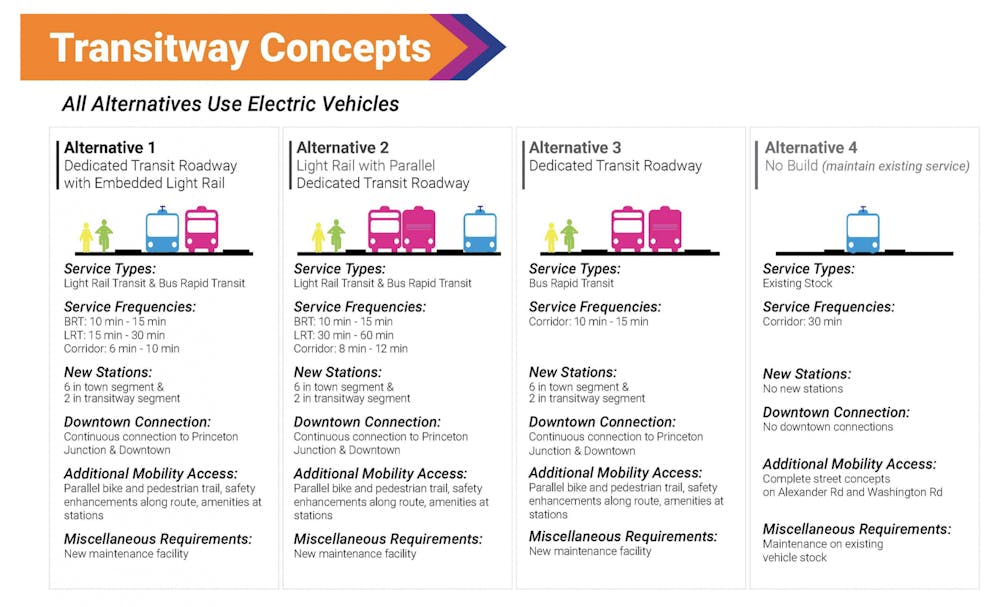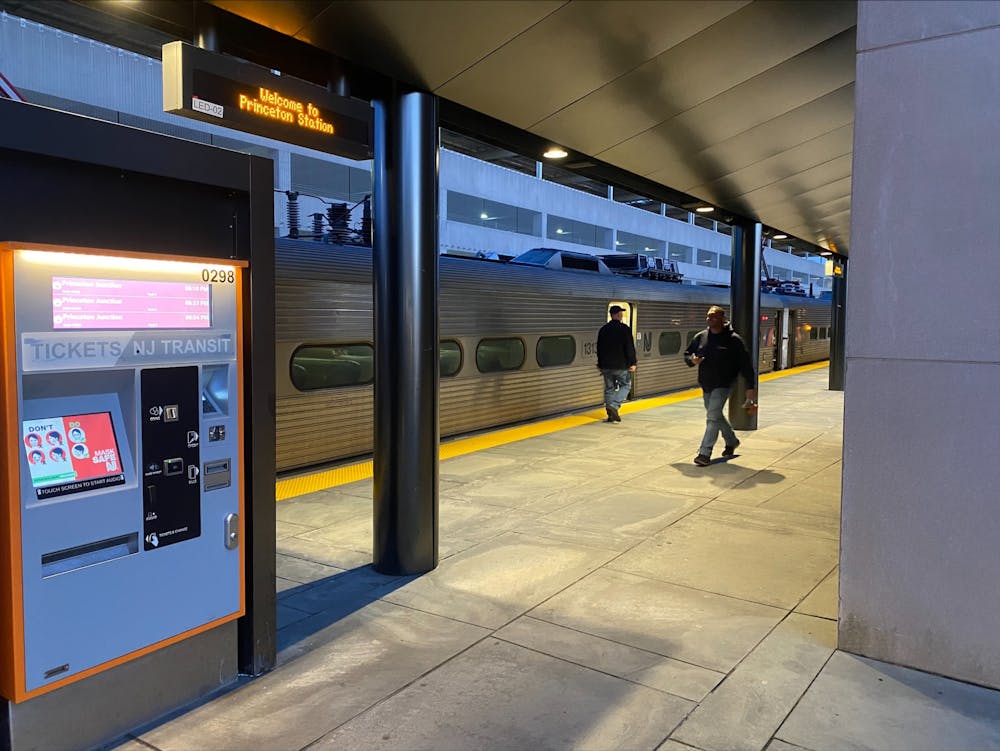The Dinky is getting a makeover — maybe.
In April 2021, NJ Transit began a study on the Dinky, the shortest scheduled commuter rail line in the nation, with four options for its future. As walkableprinceton.com first reported, the four original alternatives being considered to update the Dinky have now been whittled down to two: Alternative 1 and Alternative 4.

Courtesy of NJ Transit
Alternative 1 changes the existing train to an electric light rail that would run every 15–30 minutes. The light rail would be embedded in a roadway including a rapid transit bus that would run every 10–15 minutes. Additionally, the bus service would extend into downtown Princeton through the Princeton Shopping Center. A parallel bike and pedestrian train would also extend from Princeton to West Windsor. Put together, there would be either a train or bus running between Princeton and the Princeton Junction train station every 6–10 minutes.
Alternative 4 is the “no build” option, which would maintain existing service with existing trains, with a train running between Princeton and the Princeton Junction train station every 30 minutes.
Alternative 1 is expected to increase ridership and will cost approximately $101 million to complete. Alternative 4 would maintain pre-pandemic ridership and would cost $15 million for maintenance on the existing trains.

In an email to The Daily Princetonian, Jim Smith, a representative from NJ Transit, explained that the four alternatives were evaluated on a set of factors that included: “potential peak period service frequencies, enhanced community connections, mobility access, potential right-of-way (ROW) impacts, potential environmental impacts, stakeholder and public input, and order of magnitude capital and fleet costs.”
After considering these factors, Alternatives 1 and 4 were “deemed most appropriate to be advanced for further study and evaluation.”
NJ Transit has eliminated Alternatives 2 and 3, which, respectively, would have a light rail with a parallel roadway (as opposed to Alternative 1’s light rail that is embedded in the roadway) or eliminated the rail option entirely in favor of a “bus rapid transit.”
Smith explained why NJ Transit passed on these two options.

“Alternative 2 will not be advanced because of substantial potential ROW impacts which would have required residential property acquisition, potential environmental impacts, and higher implementation costs,” he wrote.
“Alternative 3 will not be advanced due to customer and stakeholder preference for alternatives with higher service frequencies, as well as for alternatives with rail service,” he continued.
According to Smith, the study is expected to conclude in the spring or summer of 2022, and the timeline for the implementation of the chosen option will be determined in the future.
On an episode of Daybreak on Feb. 20, Princeton Mayor Mark Freda commented on possible renovations to the Dinky.
“In my discussions with NJ Transit, they are really trying to figure out how to use the current Dinky station, and have that create a hub that comes further into town,” he said on the podcast.
“The Dinky has quite the history, so when anything happens to the Dinky line or when anything is discussed about that, there’s an immediate reaction,” he concluded. “I’m sure they’ll get 10 people from Princeton and have 12 opinions.”
“This process is going to take years,” he concluded.
Kristen S. Appelget, University Assistant Vice President for Community and Regional Affairs, wrote in an email to the ‘Prince’ that “Princeton University is supportive of improvements that make transportation safer, more accessible, and reduce emissions.”
The school “looks forward to working with local and regional partners as NJ Transit continues to refine alternatives for the corridor,” Appelget wrote.
The original presentation outlining all alternatives from Dec. 1, 2021, can be found here.
Gabriel Robare is a staff writer, as well as a Head Puzzles Editor, for the ‘Prince.’ He can be reached at grobare@princeton.edu or on social @gabrielrobare.
Charlie Roth is a Staff News Writer for the ‘Prince,’ focusing on local town coverage. He can be reached at charlieroth@princeton.edu or @imcharlieroth on Twitter or Instagram.








